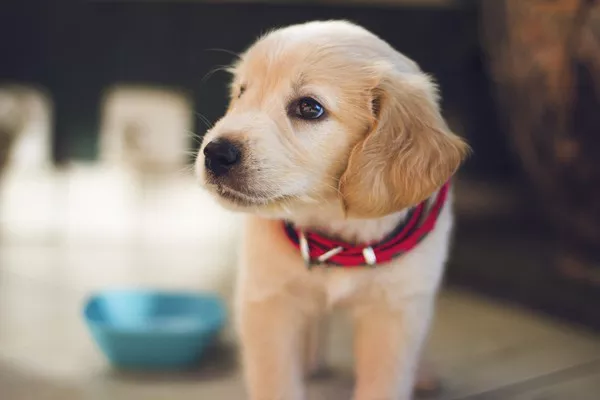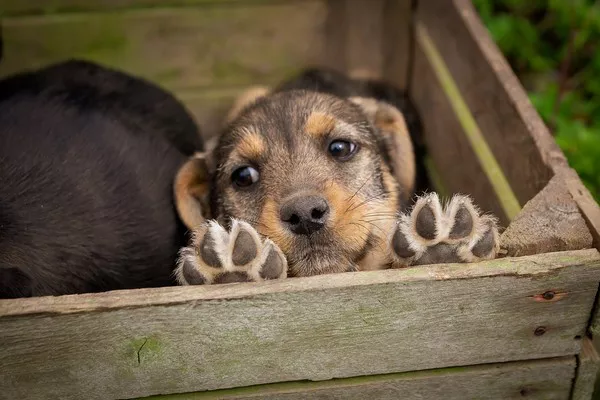Golden Retrievers are beloved family pets known for their friendly and gentle nature. However, like all puppies, Golden Retrievers go through a teething phase during which they explore the world with their mouths. This can result in playful nipping and biting behaviors that, if not addressed early on, may become a habit. In this article, we will provide a comprehensive guide on how to train a Golden Retriever puppy not to bite, ensuring a harmonious and safe environment for both your puppy and your family.
Understanding the Bite Inhibition Process
Bite inhibition is a crucial skill that all puppies must learn. It involves teaching your Golden Retriever puppy to control the force of their bite and to understand that biting humans is not acceptable behavior. Puppies learn bite inhibition primarily through socialization with their littermates and mother. However, as the owner, you play a vital role in reinforcing and refining this skill.
Start Early: Training should begin as soon as you bring your Golden Retriever puppy home. Early intervention helps establish boundaries and teaches the puppy what is acceptable behavior.
Gentle Play: Encourage gentle play with your puppy, using appropriate toys and rewards. Avoid games that involve excessive roughness or encourage biting, such as tug-of-war.
Redirect the Behavior: When your puppy tries to nip or bite, redirect their attention to an appropriate toy or chew bone. This helps them understand that biting humans is not acceptable, while providing them with an alternative outlet for their teething needs.
Positive Reinforcement: Use positive reinforcement techniques, such as praise and treats, to reward your puppy for good behavior. Whenever your puppy refrains from biting or nipping, offer verbal praise and a small treat to reinforce the desired behavior.
Consistency is Key: Be consistent in your training approach and ensure that all family members and visitors follow the same guidelines. Mixed signals can confuse the puppy and hinder their progress.
Teaching “No Bite” Command
In addition to redirecting the puppy’s biting behavior, teaching a “no bite” command is an effective way to communicate boundaries. Follow these steps to train your Golden Retriever puppy to understand the command:
- Use a Firm Tone: When your puppy nips or bites, firmly say “no bite” in a clear and assertive tone. Avoid yelling or using aggressive behavior, as this can frighten the puppy and undermine trust.
- Withdraw Attention: If your puppy continues to bite despite the command, withdraw your attention by turning away, crossing your arms, or leaving the room for a brief moment. This teaches the puppy that biting leads to a loss of attention and social interaction.
- Reinforce Positive Behavior: Whenever your puppy responds appropriately and refrains from biting, offer praise, affection, and treats. This reinforces the desired behavior and motivates the puppy to continue practicing bite inhibition.
- Repeat and Practice: Consistently repeat the “no bite” command and reinforce positive behavior. Practice these training sessions several times a day in short, focused intervals to maximize effectiveness.
Socialization and Bite Inhibition
Socialization plays a vital role in training a Golden Retriever puppy not to bite. By exposing your puppy to various environments, people, and other animals, you help them develop good manners and appropriate behavior. Incorporate the following strategies into your puppy’s socialization routine:
- Puppy Classes: Enroll your Golden Retriever puppy in a reputable puppy socialization or obedience class. These classes provide opportunities for controlled interactions with other puppies and professional guidance from trainers.
- Controlled Interactions: Arrange controlled playdates with well-behaved adult dogs or older puppies who can model appropriate behavior for your puppy. Supervise these interactions closely to ensure safety and intervene if necessary to prevent any rough play or aggressive behavior.
- Exposure to Different Environments: Introduce your puppy to various environments, such as parks, sidewalks, and busy streets. This exposure helps them become familiar with different sights, sounds, and smells, reducing anxiety and fear that may trigger biting behaviors.
- Positive Reinforcement: During socialization experiences, reward your puppy for calm and appropriate behavior around people and other animals. Use treats, praise, and petting to reinforce positive interactions and discourage any biting tendencies.
- Children and Visitors: Teach children and visitors how to interact with your Golden Retriever puppy appropriately. Instruct them to avoid rough play and to avoid provoking or teasing the puppy, as these actions can trigger biting behaviors.
Seeking Professional Help
In some cases, despite consistent training efforts, a Golden Retriever puppy may continue to exhibit persistent biting behavior. If your puppy’s biting becomes aggressive or poses a safety concern, it is crucial to seek professional help from a qualified dog trainer or animal behaviorist. These experts can assess the situation, identify any underlying causes, and provide specific guidance tailored to your puppy’s needs.
Remember, training a Golden Retriever puppy not to bite requires patience, consistency, and positive reinforcement. It is essential to approach the training process with love, understanding, and a commitment to setting clear boundaries. With time, proper training, and socialization, your Golden Retriever puppy will learn to control their biting instincts and become a well-behaved and beloved member of your family.
Recommended reading:


























